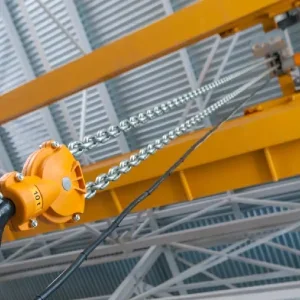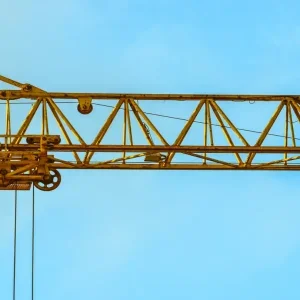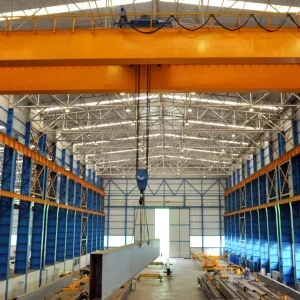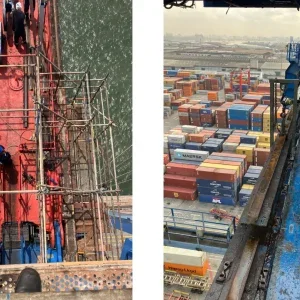The system is for an automated manufacturing process at a new-build facility to pick up parts from one workstation and take them to another one on the assembly line.
The CPA system prevents the trolley from traveling off the bridge or workstation if they are not interlocked and it transfers load between bridges to maintain the rail elevation across the joint. Interlocks are common on cranes, but this was a highly-customized build and, as such, design through commissioning spanned a full year.
“The project was already underway before the end user got us involved. The crane and the workstations were being designed and manufactured by several different companies, but there wasn’t an off-the-shelf solution for the interlocks. For reasons unknown to us, it was not in the scope of work for the design teams already on the job and none of the other teams wanted to design a custom interlock system. Once our design was completed, the end user partnered with a local machine shop to build it. This is what we call a design-bid-build project structure,” said Richard Phillips, mechanical engineer, CPA.
The single-girder Demag bridge cranes, which span 124 ft., are equipped with special purpose trolleys that tow airplane parts. There is no hoist—just a powered drive trolley that tows a linked set of idler trolleys.
A bridge crane pulls up to a workstation, locks in place, and the trolley travels off the bridge and onto the workstation. From there the parts are positioned in place for the next stage of manufacturing.
The monorail alignment forces are 2,500 lbs. vertical, and 500 lbs. horizontal; alignment tolerance is 1/16 in.—for horizontal and vertical. The alignment forces and tolerances are essentially the working capabilities of the interlock system. For example, the interlocks can transfer up to 2,500 lbs. between the bridge and the workstation to align the rails vertically within 1/16 in. Conversely the interlocks can transfer 500 lbs. between the bridge and the workstation to align the rails horizontally to the same tolerance.
CPA, which offers a variety of services, including procurement, specification, design, manufacturing review, modification, and accident investigation—designed a system whereby electrical power did not need to be supplied at each workstation.
Phillips said this simplified the process because there was already electrical power available on the bridge but not at the workstations, so an alternative solution would have required a design change. This might have involved running a conduit and building an electrical panel to power electrical components.
The interlock system also aligns the bridge and workstation rails within a tight tolerance to ensure a smooth transition for the trolley as it crosses the interface between rail systems. The trolley is allowed to cross onto the workstation when the bridge and workstation are aligned and securely locked together.






